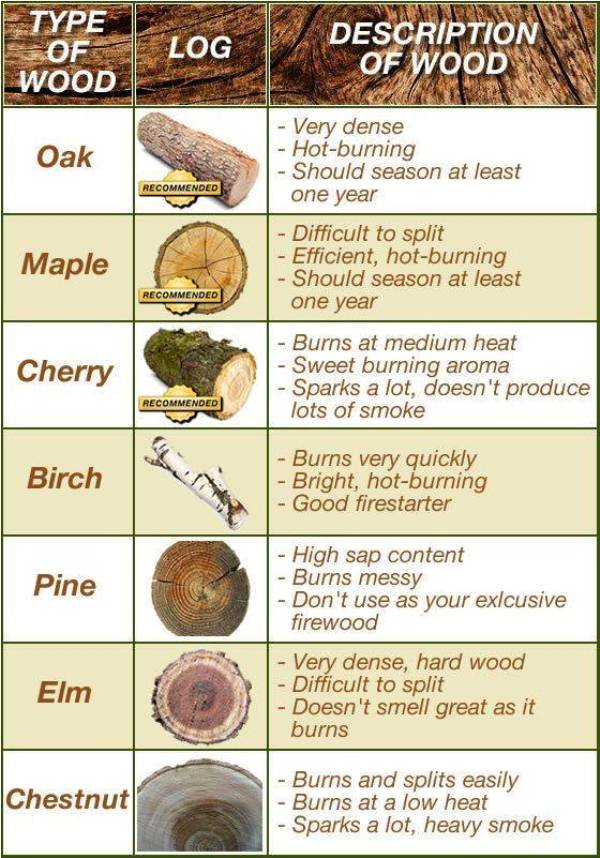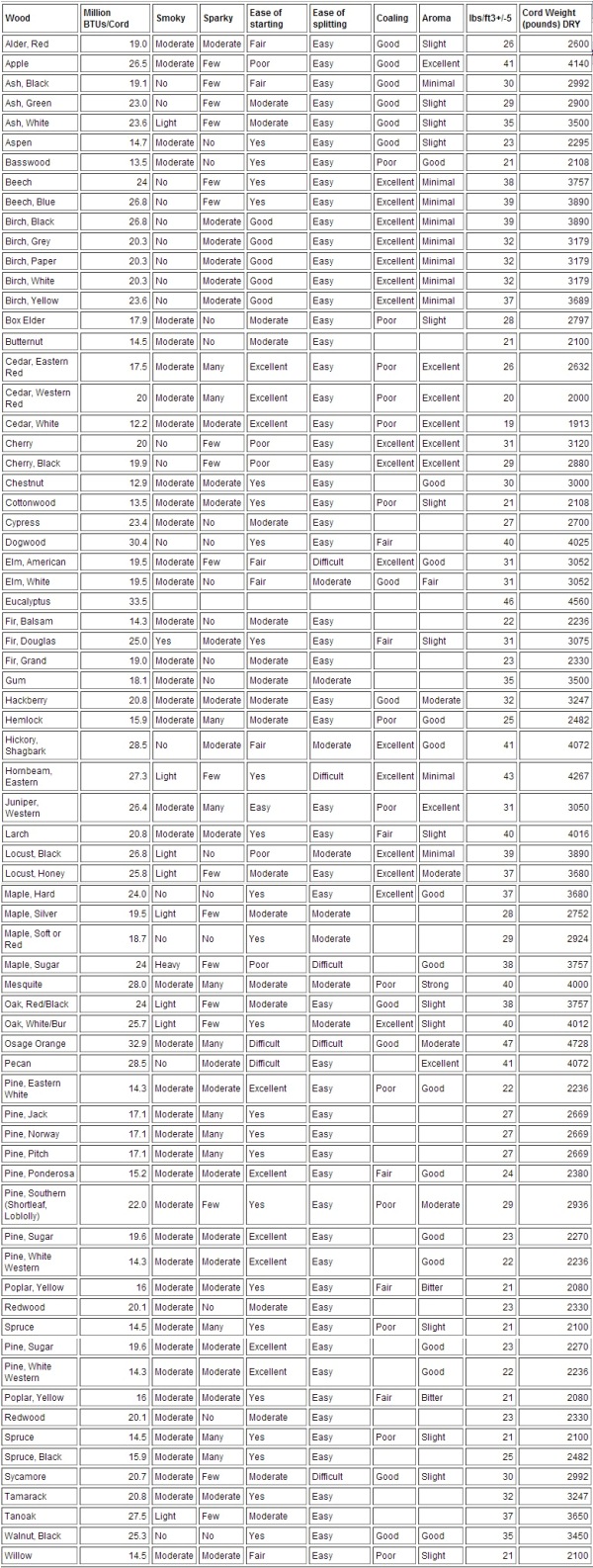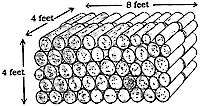Firewood from different species or types of trees varies widely in heat content, burning characteristics, and overall quality.
BTUs, or British Thermal Units, measure the heat of combustion. Even among the same species, different chunks of firewood are going to burn hotter than others, depending on how dry they are and the conditions under which they grew. These numbers are intended as a rough comparison. It’s good to know that moisture content is more important than tree species when planning for wood heat. Wood that has dried properly will almost always burn hotter than wood that still has moisture in it, because much of the heat energy is used to evaporate the remaining water. Try to stack your firewood about a year in advance so that it has time to completely dry. You’ll get more heat out of your investment if you do.
Green weight is the weight of a cord of freshly cut wood before drying. Dry weight is the weight of a cord after air drying. Green firewood may contain 50% or more water by weight. Green wood produces less heat because heat must be used to boil off water before combustion can occur. Green wood also produces more smoke and creosote (material that deposits on inside walls of chimneys and may cause chimney fires) than dry wood. Firewood should therefore always be purchased dry or allowed to dry before burning. Dry wood may cost more than green wood because it produces more heat and is easier to handle.
A wood’s dry weight per volume, or density, is important because denser or heavier wood contains more heat per volume.
In general it is best to buy or gather dense woods such as oak, hard maple, or ash.
Hardwoods, or woods from broadleaved trees, tend to be denser than softwoods or woods from conifers.
Some firewood dealers sell “mixed hardwood” firewood. This may or may not be desirable, depending on the proportion of low- density hardwoods such as cottonwood that are included.
Firewood Volume
Though firewood dry weight is important for determining heat content, firewood is normally bought and sold by volume. The most common unit of firewood volume is the cord, also known as a standard or full cord. A cord is an evenly-stacked pile containing 128 cubic feet of wood and air space. Though a cord can be piled in any shape, a standard cord is generally thought of as a stack of wood 4 feet tall, 8 feet long, and 4 feet deep (Figure 1). To figure the number of cords in another size or shape pile, determine the pile’s cubic foot volume and divide by 128. A randomly-piled stack of wood will generally contain more air and less wood than one neatly piled.
Figure 1. Standard Cord
Some dealers sell wood by the face cord or short cord (Figure 2). A face cord is a stack of wood 4 feet high, 8 feet long, and as deep as the pieces are long. Pieces are commonly 12 to 18 inches long, so a face cord may contain 32 to 48 cubic feet of wood and air.
Figure 2. Face Cord
Another common firewood measure is the pickup load (Figure 3). This is a very imprecise but common measure. A full-size pickup with a standard bed can hold about 1/2 of a full cord or 64 cubic feet when loaded even with the top of the bed. Small pickups hold much less. Random loading will decrease this amount further.
Figure 3. Pickup Load
A randomly-piled stack or pickup load of wood will contain more air and less wood than one neatly stacked. Crooked, small diameter, and knotty or branchy pieces also reduce the amount of wood in a pile.
For More Information
A number of good publications are available to help you learn more about using firewood for heating.
Burning Wood and Coal by Susan Mackay, L. Dale Baker




















Would be nice to have a list of woods to avoid with the reason(s).